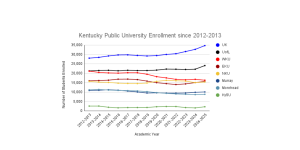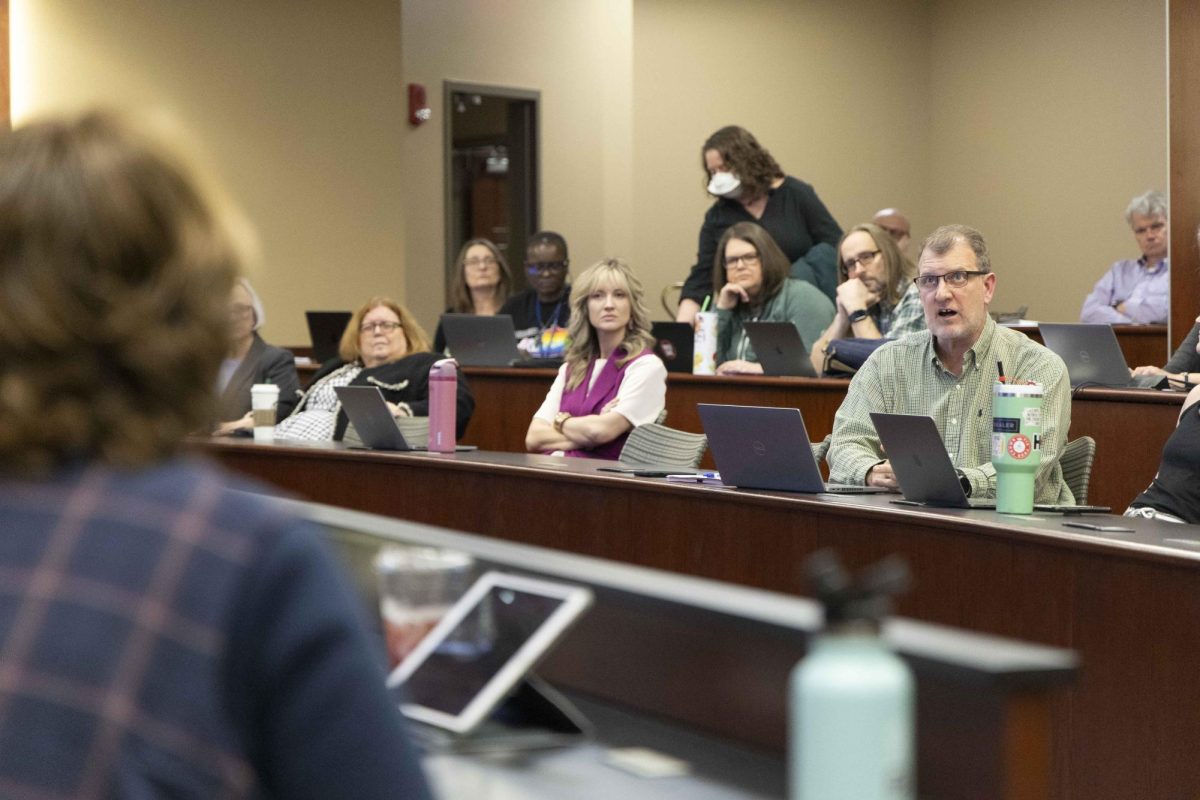Student-to-faculty ratio in ‘middle of the pack’
April 15, 2011
WKU’s student to faculty ratio of 19-to-1 isn’t what it looks like.
“It’s a number that’s consistently used, but in terms of what it means in the way the university functions, it’s not quite so obvious,” said Doug McElroy, assistant vice president for Academic Affairs. “I think a lot of people try to equate it with something meaningful, and it doesn’t quite work that way.”
The ratio is calculated by dividing full-time students and 1/3 of part-time students by full-time faculty and 1/3 of part-time faculty, according to the WKU Fact Book.
McElroy said the ratio has remained relatively steady over the past few years.
“The way that we need to look at it is it’s actually pretty unusual that an institution could be growing as we are and suffering budget cuts but remaining at a constant level,” he said.
McElroy said compared to our benchmark institutions, which are those similar to WKU or ones the university tries to emulate, WKU is somewhere in the middle.
The highest ratio, at California State University in Chico, Calif., is 23-to-1, and the lowest, at Eastern Illinois University, is 15-to-1.
“We’re right in the middle of the pack,” McElroy said.
Although staff and student enrollment continues to rise, tenure and tenure-track faculty numbers are not matching this increase.
According to the WKU Fact Book, in 2006, the university had 18,664 students and 550 tenure and tenure-track faculty members.
While the student to faculty ratio was 18-to-1, the student to tenure-track faculty was 33.9-to-1.
In 2009, total enrollment had increased to 20,712 and tenure and tenure track faculty members had increased to 559.
Student to faculty ratio had increased to 19-to-1, but student to tenure and tenure track ratio increased to 37.1-to-1.
Gordon Emslie, provost and vice president for Academic Affairs, has said on many occasions — most recently WKU’s academic forum in March — that WKU’s 19-to-1 ratio means the university is keeping pace with its enrollment growth.
“It’s really a little deceptive,” said Patricia Minter, associate professor of history and faculty regent. “We’re losing ground.”
An increased number of students paired with a relatively steady number of tenure faculty could mean larger class sizes.
“You just can’t put 150 people in the chairs and expect you have the same quality of teaching,” Minter said. “You have more work for more students being done by fewer people.”
Tenured faculty cannot be fired without just cause, and tenure-track are faculty members who are eligible to become tenured.
Minter said tenure and tenure-track faculty are important because of their extensive work and knowledge.
“Do you want to be taught by people who are well-known experts in their field, who have active research agendas in their field?” Minter said. “Or do you want someone who can just stand up there and give information?”
















